Medical Equipment Sterilization
Pharmaceutical Sterilization
Laboratory Sterilization
Food Sterilization
Steam Sterilizers
Ethylene Oxide Sterilizers
Radiation Sterilizers
Plasma Sterilizers
Hospitals
Pharmaceutical Companies
Clinical Laboratories
Food Industry
Thermal Sterilization
Chemical Sterilization
Radiation Sterilization
North America
Europe
South America
Asia Pacific
Middle East and Africa
North America Outlook (USD Billion, 2019-2035)
North America Sterilization Equipment Market by Application Type
Medical Equipment Sterilization
Pharmaceutical Sterilization
Laboratory Sterilization
Food Sterilization
North America Sterilization Equipment Market by Product Type
Steam Sterilizers
Ethylene Oxide Sterilizers
Radiation Sterilizers
Plasma Sterilizers
North America Sterilization Equipment Market by End Use Type
Hospitals
Pharmaceutical Companies
Clinical Laboratories
Food Industry
North America Sterilization Equipment Market by Technique Type
Thermal Sterilization
Chemical Sterilization
Radiation Sterilization
North America Sterilization Equipment Market by Regional Type
US
Canada
US Outlook (USD Billion, 2019-2035)
US Sterilization Equipment Market by Application Type
Medical Equipment Sterilization
Pharmaceutical Sterilization
Laboratory Sterilization
Food Sterilization
US Sterilization Equipment Market by Product Type
Steam Sterilizers
Ethylene Oxide Sterilizers
Radiation Sterilizers
Plasma Sterilizers
US Sterilization Equipment Market by End Use Type
Hospitals
Pharmaceutical Companies
Clinical Laboratories
Food Industry
US Sterilization Equipment Market by Technique Type
Thermal Sterilization
Chemical Sterilization
Radiation Sterilization
CANADA Outlook (USD Billion, 2019-2035)
CANADA Sterilization Equipment Market by Application Type
Medical Equipment Sterilization
Pharmaceutical Sterilization
Laboratory Sterilization
Food Sterilization
CANADA Sterilization Equipment Market by Product Type
Steam Sterilizers
Ethylene Oxide Sterilizers
Radiation Sterilizers
Plasma Sterilizers
CANADA Sterilization Equipment Market by End Use Type
Hospitals
Pharmaceutical Companies
Clinical Laboratories
Food Industry
CANADA Sterilization Equipment Market by Technique Type
Thermal Sterilization
Chemical Sterilization
Radiation Sterilization
Europe Outlook (USD Billion, 2019-2035)
Europe Sterilization Equipment Market by Application Type
Medical Equipment Sterilization
Pharmaceutical Sterilization
Laboratory Sterilization
Food Sterilization
Europe Sterilization Equipment Market by Product Type
Steam Sterilizers
Ethylene Oxide Sterilizers
Radiation Sterilizers
Plasma Sterilizers
Europe Sterilization Equipment Market by End Use Type
Hospitals
Pharmaceutical Companies
Clinical Laboratories
Food Industry
Europe Sterilization Equipment Market by Technique Type
Thermal Sterilization
Chemical Sterilization
Radiation Sterilization
Europe Sterilization Equipment Market by Regional Type
Germany
UK
France
Russia
Italy
Spain
Rest of Europe
GERMANY Outlook (USD Billion, 2019-2035)
GERMANY Sterilization Equipment Market by Application Type
Medical Equipment Sterilization
Pharmaceutical Sterilization
Laboratory Sterilization
Food Sterilization
GERMANY Sterilization Equipment Market by Product Type
Steam Sterilizers
Ethylene Oxide Sterilizers
Radiation Sterilizers
Plasma Sterilizers
GERMANY Sterilization Equipment Market by End Use Type
Hospitals
Pharmaceutical Companies
Clinical Laboratories
Food Industry
GERMANY Sterilization Equipment Market by Technique Type
Thermal Sterilization
Chemical Sterilization
Radiation Sterilization
UK Outlook (USD Billion, 2019-2035)
UK Sterilization Equipment Market by Application Type
Medical Equipment Sterilization
Pharmaceutical Sterilization
Laboratory Sterilization
Food Sterilization
UK Sterilization Equipment Market by Product Type
Steam Sterilizers
Ethylene Oxide Sterilizers
Radiation Sterilizers
Plasma Sterilizers
UK Sterilization Equipment Market by End Use Type
Hospitals
Pharmaceutical Companies
Clinical Laboratories
Food Industry
UK Sterilization Equipment Market by Technique Type
Thermal Sterilization
Chemical Sterilization
Radiation Sterilization
FRANCE Outlook (USD Billion, 2019-2035)
FRANCE Sterilization Equipment Market by Application Type
Medical Equipment Sterilization
Pharmaceutical Sterilization
Laboratory Sterilization
Food Sterilization
FRANCE Sterilization Equipment Market by Product Type
Steam Sterilizers
Ethylene Oxide Sterilizers
Radiation Sterilizers
Plasma Sterilizers
FRANCE Sterilization Equipment Market by End Use Type
Hospitals
Pharmaceutical Companies
Clinical Laboratories
Food Industry
FRANCE Sterilization Equipment Market by Technique Type
Thermal Sterilization
Chemical Sterilization
Radiation Sterilization
RUSSIA Outlook (USD Billion, 2019-2035)
RUSSIA Sterilization Equipment Market by Application Type
Medical Equipment Sterilization
Pharmaceutical Sterilization
Laboratory Sterilization
Food Sterilization
RUSSIA Sterilization Equipment Market by Product Type
Steam Sterilizers
Ethylene Oxide Sterilizers
Radiation Sterilizers
Plasma Sterilizers
RUSSIA Sterilization Equipment Market by End Use Type
Hospitals
Pharmaceutical Companies
Clinical Laboratories
Food Industry
RUSSIA Sterilization Equipment Market by Technique Type
Thermal Sterilization
Chemical Sterilization
Radiation Sterilization
ITALY Outlook (USD Billion, 2019-2035)
ITALY Sterilization Equipment Market by Application Type
Medical Equipment Sterilization
Pharmaceutical Sterilization
Laboratory Sterilization
Food Sterilization
ITALY Sterilization Equipment Market by Product Type
Steam Sterilizers
Ethylene Oxide Sterilizers
Radiation Sterilizers
Plasma Sterilizers
ITALY Sterilization Equipment Market by End Use Type
Hospitals
Pharmaceutical Companies
Clinical Laboratories
Food Industry
ITALY Sterilization Equipment Market by Technique Type
Thermal Sterilization
Chemical Sterilization
Radiation Sterilization
SPAIN Outlook (USD Billion, 2019-2035)
SPAIN Sterilization Equipment Market by Application Type
Medical Equipment Sterilization
Pharmaceutical Sterilization
Laboratory Sterilization
Food Sterilization
SPAIN Sterilization Equipment Market by Product Type
Steam Sterilizers
Ethylene Oxide Sterilizers
Radiation Sterilizers
Plasma Sterilizers
SPAIN Sterilization Equipment Market by End Use Type
Hospitals
Pharmaceutical Companies
Clinical Laboratories
Food Industry
SPAIN Sterilization Equipment Market by Technique Type
Thermal Sterilization
Chemical Sterilization
Radiation Sterilization
REST OF EUROPE Outlook (USD Billion, 2019-2035)
REST OF EUROPE Sterilization Equipment Market by Application Type
Medical Equipment Sterilization
Pharmaceutical Sterilization
Laboratory Sterilization
Food Sterilization
REST OF EUROPE Sterilization Equipment Market by Product Type
Steam Sterilizers
Ethylene Oxide Sterilizers
Radiation Sterilizers
Plasma Sterilizers
REST OF EUROPE Sterilization Equipment Market by End Use Type
Hospitals
Pharmaceutical Companies
Clinical Laboratories
Food Industry
REST OF EUROPE Sterilization Equipment Market by Technique Type
Thermal Sterilization
Chemical Sterilization
Radiation Sterilization
APAC Outlook (USD Billion, 2019-2035)
APAC Sterilization Equipment Market by Application Type
Medical Equipment Sterilization
Pharmaceutical Sterilization
Laboratory Sterilization
Food Sterilization
APAC Sterilization Equipment Market by Product Type
Steam Sterilizers
Ethylene Oxide Sterilizers
Radiation Sterilizers
Plasma Sterilizers
APAC Sterilization Equipment Market by End Use Type
Hospitals
Pharmaceutical Companies
Clinical Laboratories
Food Industry
APAC Sterilization Equipment Market by Technique Type
Thermal Sterilization
Chemical Sterilization
Radiation Sterilization
APAC Sterilization Equipment Market by Regional Type
China
India
Japan
South Korea
Malaysia
Thailand
Indonesia
Rest of APAC
CHINA Outlook (USD Billion, 2019-2035)
CHINA Sterilization Equipment Market by Application Type
Medical Equipment Sterilization
Pharmaceutical Sterilization
Laboratory Sterilization
Food Sterilization
CHINA Sterilization Equipment Market by Product Type
Steam Sterilizers
Ethylene Oxide Sterilizers
Radiation Sterilizers
Plasma Sterilizers
CHINA Sterilization Equipment Market by End Use Type
Hospitals
Pharmaceutical Companies
Clinical Laboratories
Food Industry
CHINA Sterilization Equipment Market by Technique Type
Thermal Sterilization
Chemical Sterilization
Radiation Sterilization
INDIA Outlook (USD Billion, 2019-2035)
INDIA Sterilization Equipment Market by Application Type
Medical Equipment Sterilization
Pharmaceutical Sterilization
Laboratory Sterilization
Food Sterilization
INDIA Sterilization Equipment Market by Product Type
Steam Sterilizers
Ethylene Oxide Sterilizers
Radiation Sterilizers
Plasma Sterilizers
INDIA Sterilization Equipment Market by End Use Type
Hospitals
Pharmaceutical Companies
Clinical Laboratories
Food Industry
INDIA Sterilization Equipment Market by Technique Type
Thermal Sterilization
Chemical Sterilization
Radiation Sterilization
JAPAN Outlook (USD Billion, 2019-2035)
JAPAN Sterilization Equipment Market by Application Type
Medical Equipment Sterilization
Pharmaceutical Sterilization
Laboratory Sterilization
Food Sterilization
JAPAN Sterilization Equipment Market by Product Type
Steam Sterilizers
Ethylene Oxide Sterilizers
Radiation Sterilizers
Plasma Sterilizers
JAPAN Sterilization Equipment Market by End Use Type
Hospitals
Pharmaceutical Companies
Clinical Laboratories
Food Industry
JAPAN Sterilization Equipment Market by Technique Type
Thermal Sterilization
Chemical Sterilization
Radiation Sterilization
SOUTH KOREA Outlook (USD Billion, 2019-2035)
SOUTH KOREA Sterilization Equipment Market by Application Type
Medical Equipment Sterilization
Pharmaceutical Sterilization
Laboratory Sterilization
Food Sterilization
SOUTH KOREA Sterilization Equipment Market by Product Type
Steam Sterilizers
Ethylene Oxide Sterilizers
Radiation Sterilizers
Plasma Sterilizers
SOUTH KOREA Sterilization Equipment Market by End Use Type
Hospitals
Pharmaceutical Companies
Clinical Laboratories
Food Industry
SOUTH KOREA Sterilization Equipment Market by Technique Type
Thermal Sterilization
Chemical Sterilization
Radiation Sterilization
MALAYSIA Outlook (USD Billion, 2019-2035)
MALAYSIA Sterilization Equipment Market by Application Type
Medical Equipment Sterilization
Pharmaceutical Sterilization
Laboratory Sterilization
Food Sterilization
MALAYSIA Sterilization Equipment Market by Product Type
Steam Sterilizers
Ethylene Oxide Sterilizers
Radiation Sterilizers
Plasma Sterilizers
MALAYSIA Sterilization Equipment Market by End Use Type
Hospitals
Pharmaceutical Companies
Clinical Laboratories
Food Industry
MALAYSIA Sterilization Equipment Market by Technique Type
Thermal Sterilization
Chemical Sterilization
Radiation Sterilization
THAILAND Outlook (USD Billion, 2019-2035)
THAILAND Sterilization Equipment Market by Application Type
Medical Equipment Sterilization
Pharmaceutical Sterilization
Laboratory Sterilization
Food Sterilization
THAILAND Sterilization Equipment Market by Product Type
Steam Sterilizers
Ethylene Oxide Sterilizers
Radiation Sterilizers
Plasma Sterilizers
THAILAND Sterilization Equipment Market by End Use Type
Hospitals
Pharmaceutical Companies
Clinical Laboratories
Food Industry
THAILAND Sterilization Equipment Market by Technique Type
Thermal Sterilization
Chemical Sterilization
Radiation Sterilization
INDONESIA Outlook (USD Billion, 2019-2035)
INDONESIA Sterilization Equipment Market by Application Type
Medical Equipment Sterilization
Pharmaceutical Sterilization
Laboratory Sterilization
Food Sterilization
INDONESIA Sterilization Equipment Market by Product Type
Steam Sterilizers
Ethylene Oxide Sterilizers
Radiation Sterilizers
Plasma Sterilizers
INDONESIA Sterilization Equipment Market by End Use Type
Hospitals
Pharmaceutical Companies
Clinical Laboratories
Food Industry
INDONESIA Sterilization Equipment Market by Technique Type
Thermal Sterilization
Chemical Sterilization
Radiation Sterilization
REST OF APAC Outlook (USD Billion, 2019-2035)
REST OF APAC Sterilization Equipment Market by Application Type
Medical Equipment Sterilization
Pharmaceutical Sterilization
Laboratory Sterilization
Food Sterilization
REST OF APAC Sterilization Equipment Market by Product Type
Steam Sterilizers
Ethylene Oxide Sterilizers
Radiation Sterilizers
Plasma Sterilizers
REST OF APAC Sterilization Equipment Market by End Use Type
Hospitals
Pharmaceutical Companies
Clinical Laboratories
Food Industry
REST OF APAC Sterilization Equipment Market by Technique Type
Thermal Sterilization
Chemical Sterilization
Radiation Sterilization
South America Outlook (USD Billion, 2019-2035)
South America Sterilization Equipment Market by Application Type
Medical Equipment Sterilization
Pharmaceutical Sterilization
Laboratory Sterilization
Food Sterilization
South America Sterilization Equipment Market by Product Type
Steam Sterilizers
Ethylene Oxide Sterilizers
Radiation Sterilizers
Plasma Sterilizers
South America Sterilization Equipment Market by End Use Type
Hospitals
Pharmaceutical Companies
Clinical Laboratories
Food Industry
South America Sterilization Equipment Market by Technique Type
Thermal Sterilization
Chemical Sterilization
Radiation Sterilization
South America Sterilization Equipment Market by Regional Type
Brazil
Mexico
Argentina
Rest of South America
BRAZIL Outlook (USD Billion, 2019-2035)
BRAZIL Sterilization Equipment Market by Application Type
Medical Equipment Sterilization
Pharmaceutical Sterilization
Laboratory Sterilization
Food Sterilization
BRAZIL Sterilization Equipment Market by Product Type
Steam Sterilizers
Ethylene Oxide Sterilizers
Radiation Sterilizers
Plasma Sterilizers
BRAZIL Sterilization Equipment Market by End Use Type
Hospitals
Pharmaceutical Companies
Clinical Laboratories
Food Industry
BRAZIL Sterilization Equipment Market by Technique Type
Thermal Sterilization
Chemical Sterilization
Radiation Sterilization
MEXICO Outlook (USD Billion, 2019-2035)
MEXICO Sterilization Equipment Market by Application Type
Medical Equipment Sterilization
Pharmaceutical Sterilization
Laboratory Sterilization
Food Sterilization
MEXICO Sterilization Equipment Market by Product Type
Steam Sterilizers
Ethylene Oxide Sterilizers
Radiation Sterilizers
Plasma Sterilizers
MEXICO Sterilization Equipment Market by End Use Type
Hospitals
Pharmaceutical Companies
Clinical Laboratories
Food Industry
MEXICO Sterilization Equipment Market by Technique Type
Thermal Sterilization
Chemical Sterilization
Radiation Sterilization
ARGENTINA Outlook (USD Billion, 2019-2035)
ARGENTINA Sterilization Equipment Market by Application Type
Medical Equipment Sterilization
Pharmaceutical Sterilization
Laboratory Sterilization
Food Sterilization
ARGENTINA Sterilization Equipment Market by Product Type
Steam Sterilizers
Ethylene Oxide Sterilizers
Radiation Sterilizers
Plasma Sterilizers
ARGENTINA Sterilization Equipment Market by End Use Type
Hospitals
Pharmaceutical Companies
Clinical Laboratories
Food Industry
ARGENTINA Sterilization Equipment Market by Technique Type
Thermal Sterilization
Chemical Sterilization
Radiation Sterilization
REST OF SOUTH AMERICA Outlook (USD Billion, 2019-2035)
REST OF SOUTH AMERICA Sterilization Equipment Market by Application Type
Medical Equipment Sterilization
Pharmaceutical Sterilization
Laboratory Sterilization
Food Sterilization
REST OF SOUTH AMERICA Sterilization Equipment Market by Product Type
Steam Sterilizers
Ethylene Oxide Sterilizers
Radiation Sterilizers
Plasma Sterilizers
REST OF SOUTH AMERICA Sterilization Equipment Market by End Use Type
Hospitals
Pharmaceutical Companies
Clinical Laboratories
Food Industry
REST OF SOUTH AMERICA Sterilization Equipment Market by Technique Type
Thermal Sterilization
Chemical Sterilization
Radiation Sterilization
MEA Outlook (USD Billion, 2019-2035)
MEA Sterilization Equipment Market by Application Type
Medical Equipment Sterilization
Pharmaceutical Sterilization
Laboratory Sterilization
Food Sterilization
MEA Sterilization Equipment Market by Product Type
Steam Sterilizers
Ethylene Oxide Sterilizers
Radiation Sterilizers
Plasma Sterilizers
MEA Sterilization Equipment Market by End Use Type
Hospitals
Pharmaceutical Companies
Clinical Laboratories
Food Industry
MEA Sterilization Equipment Market by Technique Type
Thermal Sterilization
Chemical Sterilization
Radiation Sterilization
MEA Sterilization Equipment Market by Regional Type
GCC Countries
South Africa
Rest of MEA
GCC COUNTRIES Outlook (USD Billion, 2019-2035)
GCC COUNTRIES Sterilization Equipment Market by Application Type
Medical Equipment Sterilization
Pharmaceutical Sterilization
Laboratory Sterilization
Food Sterilization
GCC COUNTRIES Sterilization Equipment Market by Product Type
Steam Sterilizers
Ethylene Oxide Sterilizers
Radiation Sterilizers
Plasma Sterilizers
GCC COUNTRIES Sterilization Equipment Market by End Use Type
Hospitals
Pharmaceutical Companies
Clinical Laboratories
Food Industry
GCC COUNTRIES Sterilization Equipment Market by Technique Type
Thermal Sterilization
Chemical Sterilization
Radiation Sterilization
SOUTH AFRICA Outlook (USD Billion, 2019-2035)
SOUTH AFRICA Sterilization Equipment Market by Application Type
Medical Equipment Sterilization
Pharmaceutical Sterilization
Laboratory Sterilization
Food Sterilization
SOUTH AFRICA Sterilization Equipment Market by Product Type
Steam Sterilizers
Ethylene Oxide Sterilizers
Radiation Sterilizers
Plasma Sterilizers
SOUTH AFRICA Sterilization Equipment Market by End Use Type
Hospitals
Pharmaceutical Companies
Clinical Laboratories
Food Industry
SOUTH AFRICA Sterilization Equipment Market by Technique Type
Thermal Sterilization
Chemical Sterilization
Radiation Sterilization
REST OF MEA Outlook (USD Billion, 2019-2035)
REST OF MEA Sterilization Equipment Market by Application Type
Medical Equipment Sterilization
Pharmaceutical Sterilization
Laboratory Sterilization
Food Sterilization
REST OF MEA Sterilization Equipment Market by Product Type
Steam Sterilizers
Ethylene Oxide Sterilizers
Radiation Sterilizers
Plasma Sterilizers
REST OF MEA Sterilization Equipment Market by End Use Type
Hospitals
Pharmaceutical Companies
Clinical Laboratories
Food Industry
REST OF MEA Sterilization Equipment Market by Technique Type
Thermal Sterilization
Chemical Sterilization
Radiation Sterilization
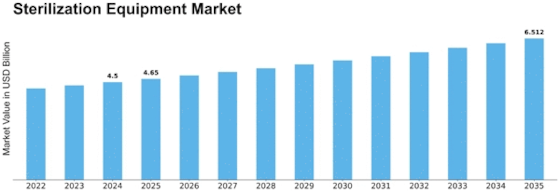

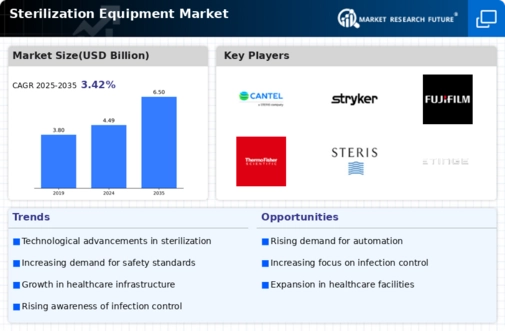

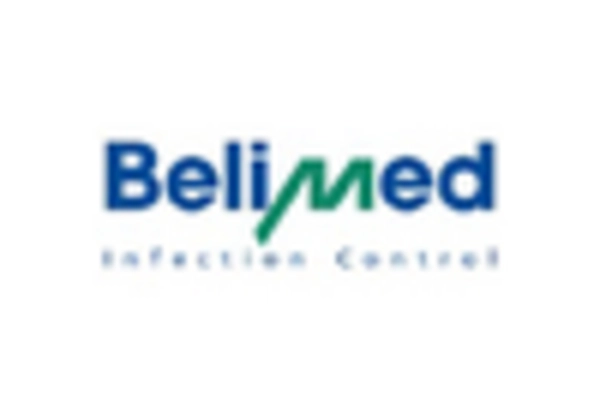
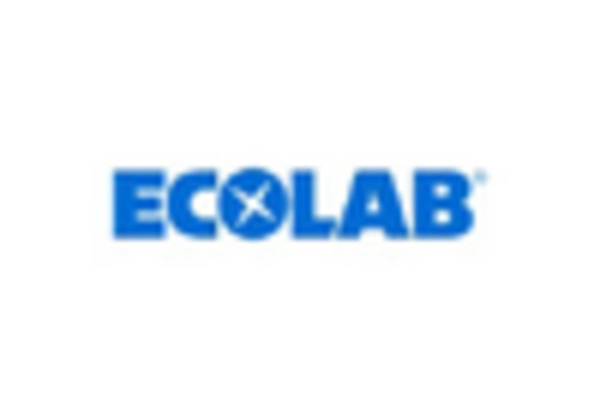
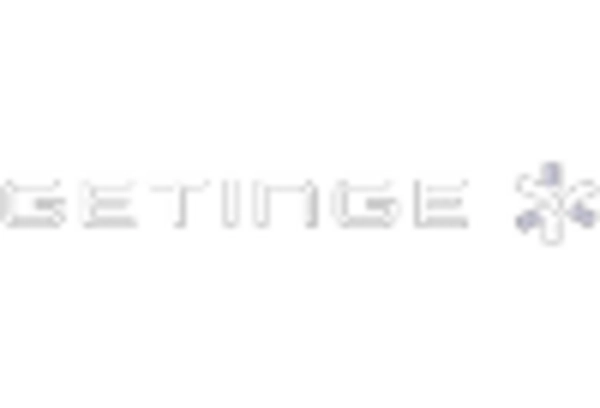
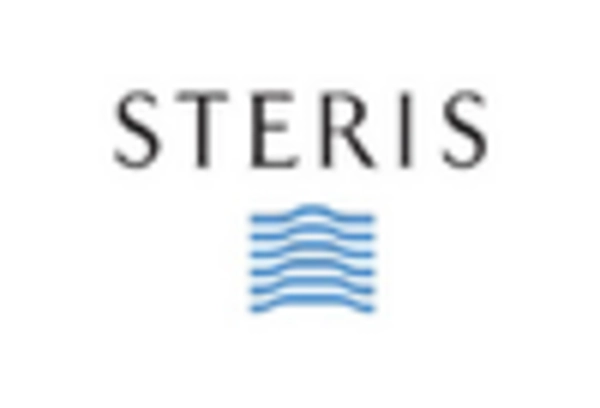
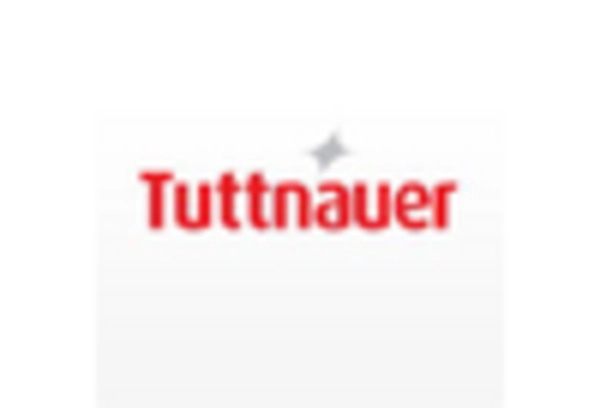









Leave a Comment